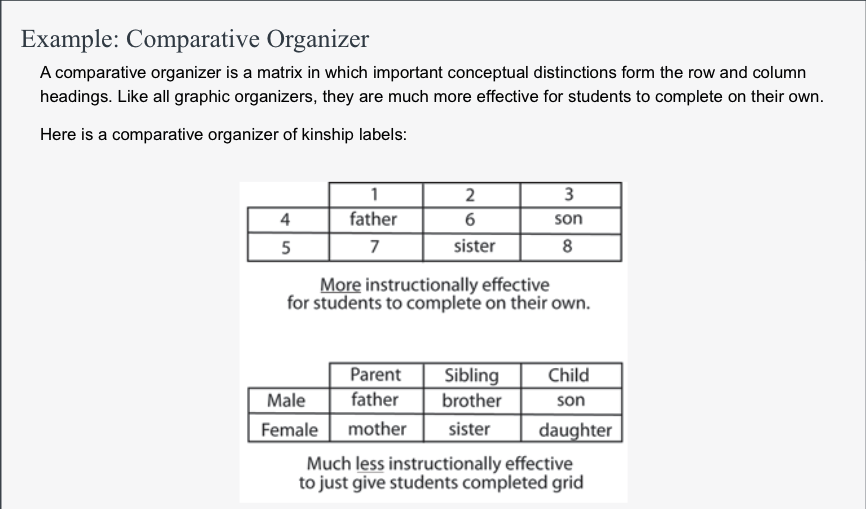One of the challenges for students is activating their appropriate knowledge to deal with novel situations. Instructors help students learn how to apply their existing knowledge to new problems.
Misconceptions and gaps in student knowledge can greatly impact student learning. Knowing what those gaps are can help you guide students to greater success in your class by enabling you to:
- Gauge overall preparedness of the students
- Target specific knowledge weaknesses
- Address misconceptions so students can try to move beyond them
- Construct a picture of the diverse student backgrounds in your class
- Bridge the gap between prior knowledge and new material
What are some effective ways to find out about students’ background knowledge?
- Quick Inventory
This method can be as simple as listing a series of about 10 to 15 statements and having students identify whether the statements are true or false.
- Quick and easy to create
- Students have a 50% chance of guessing the correct response, but this can be okay for a quick, ungraded overview of student prior knowledge
- Response data are easy to analyze and graph, providing a picture that is useful for both students and instructors
- Most useful for recall and comprehension
- Less useful for higher level thinking and skills
- Quick Familiarity Check
A variation of the true-false inventory is a survey with questions in the following format:
How familiar are you with [topic x]?
- I have never heard of x.
- I have heard of x, but my understanding is unclear.
- I have a clear idea of x, but have not used it.
- I can clearly explain x and have used it.
- KWL
You can ask students to generate their responses prior to class and submit them on your learning management system (e.g., Canvas) or by email. This will give you ample time to use this information to adjust your instruction.
- What do you Know?
- What do you Want to know?, and after instruction you ask students
- What did you Learn?
This last question encourages students to reflect on what they have learned and how they may have integrated this new knowledge with their prior knowledge.
- Background Knowledge Quiz
Given on the first class meeting or at the beginning of a unit, students complete short answer and/or multiple choice questions [Pre-test].
- Provides data about what the students know and if a short answer format is used, can provide data about how well the students can communicate what they know
- Helpful to include questions that most students can answer correctly along with more difficult questions so that the easier questions can provide a starting point for instruction
- Can stimulate students to recall information that will be relevant to the new instruction
- In large classes, use a classroom response system
- Comparative Organizer
- Concept Map
Concept maps encourage students to make connections among concepts you have presented in lecture and connections to their own prior knowledge or experiences. This will give you more information about the way that your students conceptualize and organize their knowledge around a given concept.
References
Angelo, T.A. and Cross, K.P. (1993). Classroom Assessment Techniques: A Handbook for College Teachers. Jossey-Bass. San Francisco. ISBN-1-55542-500-3.



![an example of a concept map about water at its center and lines connecting other features and relationships about water [wet, clear, freezes at 0 degree C, etc.].](https://ctl.utexas.edu/sites/default/files/styles/utexas_image_style_1600w/public/concept-map.png?itok=J2v77gPF)